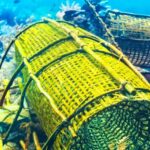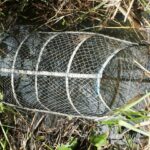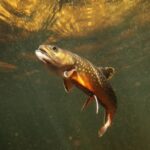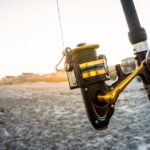Fishing is a skill, an art, and a science. There is so much to know about fishing, especially saltwater fishing. It can be overwhelming to try and understand everything. Among the most commonly asked questions among new saltwater anglers is whether it is better to fish high or low tide.
The best time to fish is neither high nor low tide but during the running tides in between, when the tide is coming in or going out. The water currents during running tides encourage fish activity and provide food for fish to eat, stirring them into action and making them more likely to bite.
The answer to this question usually surprises new anglers and can frustrate some old fishermen, but the reality is that every area is different, and the tides have different effects on fishing. Let’s explore the answer to this question to determine how to fish the ocean tides for the best results.
Is It Best To Fish High Or Low Tide?
An age-old sea fishing question that every saltwater angler must ask is whether it is better to fish when the tide is high or when the tide is low. This question is important and has a good answer, but it may not be the answer you expect.
The truth is, it is neither better to fish the high or low tide, but it is better to fish when the tide is moving in or moving out. This is known as a ‘running tide.’
There are several reasons why fishing a running tide is better than fishing when the tide is highest or lowest, but it is important to know that if you want to catch the most fish when fishing from the shore, it is best to cast when the tide is moving.
Many traditional fishermen and those who have an old-school mindset make claims such as the best times to fish are an hour before high tide, during high tide, and two hours after high tide, but the reality is that this is only true for particular locations.
Every area is different, and there are some fishing locations that yield more catches at high or low tide than a running tide. The consistent consensus among anglers is that fishing a running tide is often the better choice.
With that said, let’s explore what fishing is like during a running tide, low tide, and high tide to explain these conditions better and understand why anglers prefer fishing during a running tide.
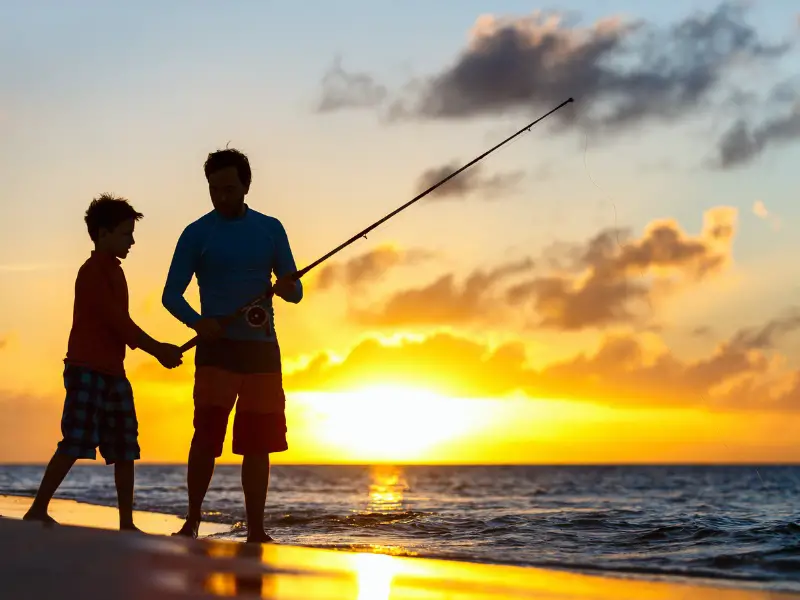
Fishing The Running Tide
The running tide is when the tide is moving in or moving out. The incoming tide is called the floor current, and the outgoing tide is known as the ebb current.
These are the best tidal movement to fish when you aim to catch as many fish as possible or when targeting a specific fish species.
All anglers agree that fishing a moving or running tide is far better than fishing when the water is at its lowest or highest.
This time of tidal movement is the best time to fish because the moving water stirs up food that fish are looking for, creates movement that oxygenates the water, which promotes fish activity, moves warmer water into the areas where fish dwell, which also increases activity, and drives food and prey items to the areas where fish tend to dwell.
The flow of water always increases activity in the ocean, and fish have adapted to use these times of moving tide to look for food, hunt, and move between feeding areas.
Fish are cold-blooded animals, so they must conserve their energy when there is nothing to eat. This means that when the tide is highest or lowest, fish tend to be more docile, less active, and tend to refrain from hunting, as there is very little food for them to eat during these times.
However, as the tide moves in or out, food becomes more prevalent, the water warms up, and more oxygen is introduced to the water, which signals the fish to move and look for food, regardless of the time of day.
If you want successfully to fish from the shore, it is always best to focus on the times of running tides, and you will have far better success than fishing during high or low tide, regardless of where you are in the world.
Fishing The High Tide
Some anglers claim that fishing during the high tide is best, but this is difficult to prove and is not valid for every coastal area.
There are some areas where fishing at high tide is best, and some species of fish have adapted to search for food in times of high tide, as they hunt or look for food that is most readily available during high tide, such as creatures found in rock pools.
However, with that said, if you are fishing from the shore, fishing a bay, or fishing in an estuary, high tide can be the most challenging time to fish.
When the water reaches its highest level, and slack water sets in, fish tend to be less active than during any other time.
The water is coldest during high tide, most food items have been washed closer to shore, the currents slow down and do not promote movement in the water, and the deep water is mostly devoid of food for fish.
However, there are instances where fishing during high tide is effective. Some larger fish species are relatively unaffected by tides, as they can swim against strong currents and are always very active.
These larger fish species may venture closer to shore during high tide simply because there is more water for them to swim and search for food that has washed close to shore in the tide.
This is only true in certain places, but it does happen, and in these locations, anglers have been known to catch some very impressive specimens.
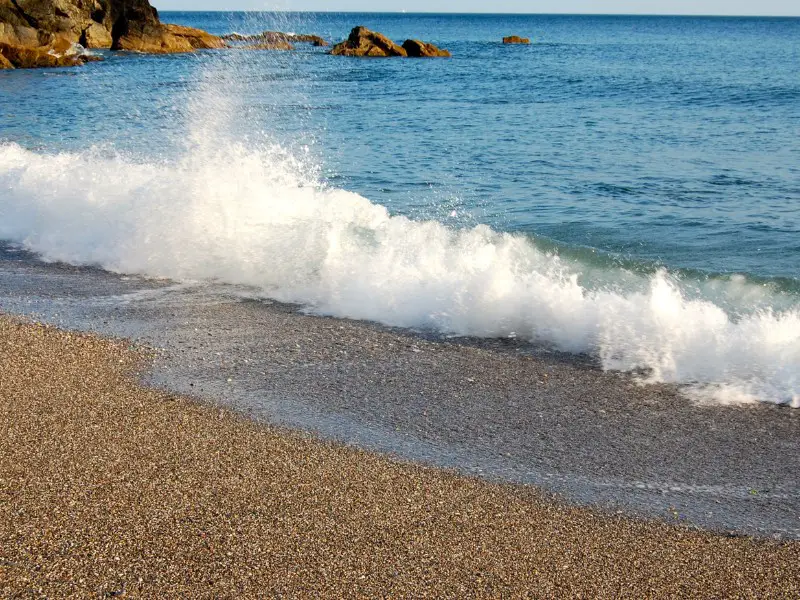
Fishing The Low Tide
Fishing during the low tide is as ineffective as the high tide and can be even worse in some places, depending on the area.
When the water level reaches its lowest point, all the potential food and prey items for fish have been washed out to sea, and they have already been consumed while the water was moving.
This means that the fish has receded away from shore, moved into hiding places, and are no longer actively looking for food. Fishing low tide can be very challenging, and most anglers know that you are unlikely to hook anything during the lowest point of the tide.
The only viable options for fishing the low tide are to fish areas where fish may be trapped after the high tide, look for fish that come in during low tide to find food in areas that are exposed by the low tide, or to fish areas that sustain fish in even during low tide.
However, these fish will likely be very small and not usually worth catching.
There are some areas, such as very healthy bays, where there are always fish to be had, especially if you paddle out into the water a short distance from shore or if you have an exceptionally far casting distance.
Apart from these instances, fishing the low tide is difficult and typically yields very low fishing success.
How Do The Tides Affect Fishing?
Coastal tides can be complex and difficult to understand. However, all saltwater anglers need to understand how tides affect fishing and how to get the best results for the fish they are targeting, the type of fishing they prefer, and the locations they tend to enjoy fishing.
The tides have a distinct effect on saltwater fishing, and it is critical to learn when the best times to fish are based on what you want to catch and where you fish.
There are two aspects of saltwater fishing to consider when examining the effect tides have on fishing: shore fishing and deep-sea fishing.
These two forms of saltwater fishing are very different and are affected by the tides differently. Let’s explore the effect that the tides have on these fishing types, to help you determine when you should be fishing.
How Do Tides Affect Shore Fishing?
Tides have a far greater effect on shore fishing than off-shore or deep-sea fishing. The shore is where the most significant effect of the rising or receding tide is felt, drastically affecting the fishing from the shore.
When the tide moves in, it oxygenates the water and brings fish from deeper areas closer to the shore to look for food and to hunt. This means the incoming tide and flood current are the best times to fish from the shore.
When the tide is at its highest, shore fishing is difficult because the fish are no longer motivated to be close to the shore, as all food items have been swept away or eaten, and the fish know to wait for the next running tide before searching for food again.
When the tide recedes, this is the next opportunity to cast from the shore. Fish will be motivated to move by the flowing current, and food items that dwell close to shore are swept deeper into the water than the current, causing fish to actively search for food.
When the tide is at its lowest, the fish are the hardest to catch, as they all stop moving and hunting, and they retreat to hiding places after the frenzy of the running tide.
This means that it is best to fish when the water is receding or coming in, and to take a break when the tide is at its highest or lowest when fishing from shore.

How Do Tides Affect Deep-Sea Fishing?
Deep-sea fishing is impacted far less by the tides than shore fishing.
If you move far enough away from the shore, the water is relatively constant, and fish are moved and motivated by the availability of food, time of day, season, and more long-term factors than the changing of tides.
This is an important concept to understand and remains a constant in most places internationally, but if you are closer to the shore, the tides can have a significant effect on the fish you catch and how successful your fishing day is.
Closer to the shore, fish are brought out of their hiding places and encouraged to eat during running tides, just the same as fishing from the shore.
In fact, deep-sea fishing is made even more effective when focusing on the times of day when the currents are strongest, as these times of day are when the fish are most active and most likely to take the bait.
If you are deep-sea fishing and having no success, wait for the running tide and move a little closer to the shore, and you will surely find more fish to catch, and you will find them in a state where they are ready to eat, which will make the fishing far easier and more successful.
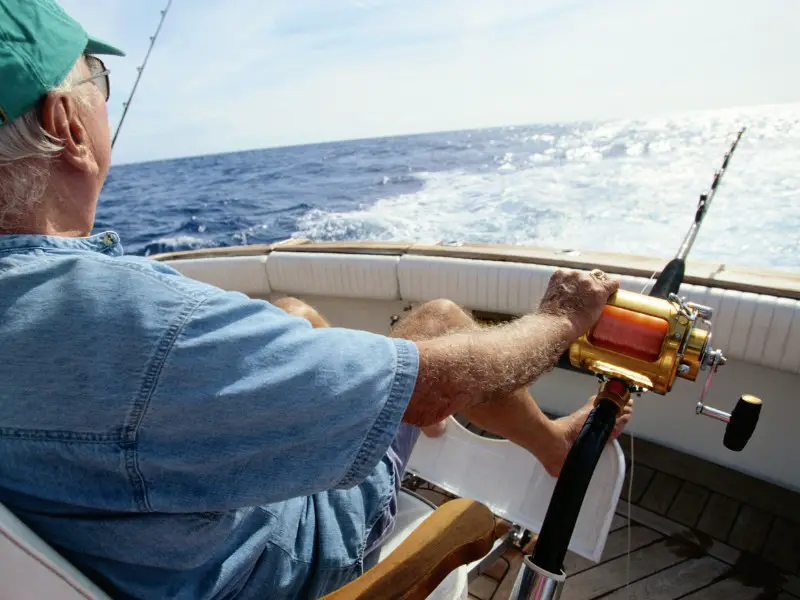
Is Fishing Running Tides Always Successful?
Running tides are usually the best tides to fish. When the tide is actively coming in or going out, there is a much higher chance of catching fish successfully. However, many anglers find themselves wondering if fishing running tides is always a sure thing or if there are issues with fishing these tides as well.
Fishing is never a sure thing. There are always days when the fish are not biting, regardless of how skilled or well-equipped the angler is. This is true for fishing running tides as it is for other fishing methods and locations.
The success of fishing in running tides is dependent on far more than just the moving water.
There are multiple other factors at play, including the weather, the season, the water temperature, how well food and prey items have spawned that season, and even how many fish there are in the eco ecosystem.
All of this means that fishing in running tides is not always successful. This method is more successful than fishing high tide, low tide, and slack water, but there are still unsuccessful fishing trips during running tides.
To help increase the chances of success when fishing from the shore, it is important to fish at running tides, but there are other factors to get right. Never assume that simply fishing while the water is moving is enough to find fish.
Always look for areas of the coastline where fish are likely to be. This could be areas where there is vegetation, reefs, rocks where food and prey items may dwell, and other fish and fish-prey habitats such as docks and peers.
It is also important to use the right bait or lures for the type of fish you want to catch and to have a plan in place before you start fishing that helps to maximize your chances.
Take the time to speak to local fishermen and find out where the fish are and what they like to eat. Do your research on the area where you want to fish and learn more about the fish found there, what they eat, when they eat, and what the weather conditions are.
Determine the best time of day to fish, learn what the fish will bite, and where the fish are. Once you are armed with this information, only then is fishing the running tides likely to be successful.
Use the right equipment, fish in the right location with the right bait and lures, use the right rig, fish at the right time of day, and fish the running tides, and the odds of catching plenty of fish will stack in your favor.
When Is The Right Time To Fish The Sea?
Fishing the running tides is more successful than fishing during any other time of day, but running tide occurs multiple times every day. How do you know when is the right time and the right running tide to fish?
To maximize your success when fishing a running tide, the factors listed above are critical, but the time of day is another important consideration.
The best time to fish the sea is during a running tide at dawn or dusk.
Most fish are far more active during dawn and dusk than at any other time of day. There are several factors for this, including temperature, water activity, availability and activity of food and prey items, and light conditions.
Regardless of the reasons, you are far more likely to catch fish during dawn and dusk than at any other time of day. Combine this with the right gear, skills, understanding, and a running tide, are you are sure to find success in the water.
Head out to the water early, or cast your line in the evening, and you will find plenty of fish looking for food.

Conclusion
Fishing at low and high tides is unlikely to be successful, but if you cast when the water is coming in or receding, you are very likely to catch fish. High and low tides are poor times for fishing in most places, but the running tides in between are always excellent fishing opportunities.
Learn the times that the tides come in and go out and plan your fishing trips around the times when the water is moving most. This will increase your chances of fishing success, and you are far more likely to leave having caught several fish than if you try to catch anything during high or low tide.
- Do You Need An Indicator For Nymph Fishing? - November 16, 2023
- Fishing Safety Tips For Families - September 25, 2023
- What Is The Best Time To Night Fish At A Lake? - September 18, 2023

![How To Read Tides for Fishing [And Catch More Fish] how to read tides for fishing](https://irvinelake.net/wp-content/uploads/2022/12/how-to-read-tides-for-fishing-150x150.jpg)
